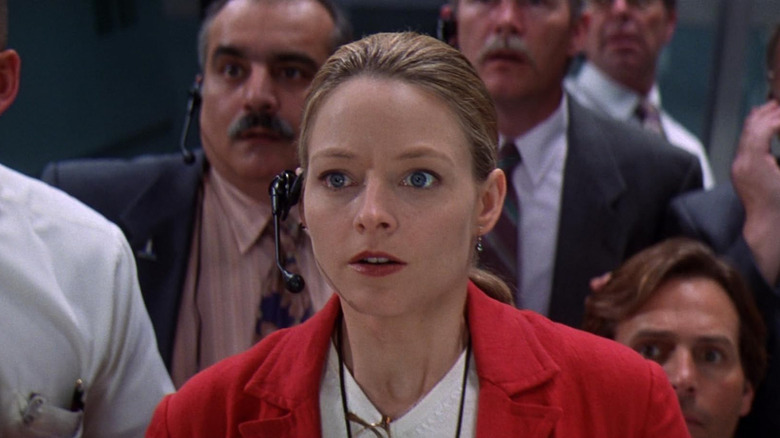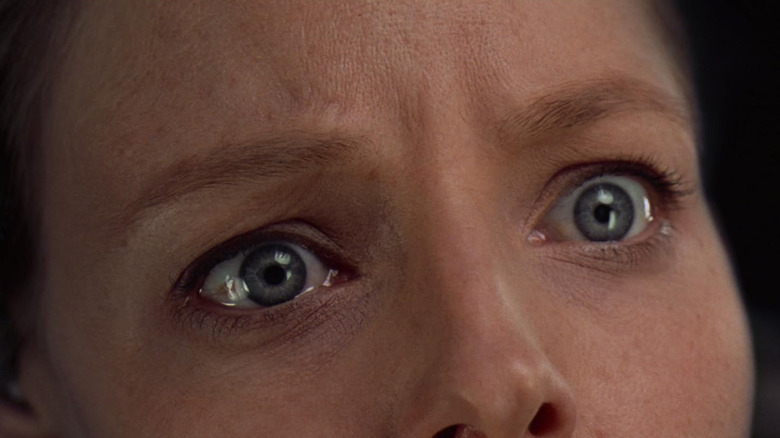Why Contact Director Robert Zemeckis Almost Passed On The Sci-Fi Classic
Robert Zemeckis has always loved his toys, but the "Back to the Future" and "Who Framed Roger Rabbit" director's fondness for tinkering with the latest filmmaking technology has eclipsed his passion for storytelling for a long time. However, between his love-it-or-hate-it Best Picture winner "Forrest Gump" and his motion-capture phase in the aughts, there was a period where Zemeckis found a string of projects that eloquently married his love of tech with his maturing sensibilities as a storyteller. This began with 1997's "Contact," a film adaptation of the late Carl Sagan's 1985 novel of the same name and possibly the unofficial start of the "Matthew McConaughey Takes Off His Shirt in All His Movies" era (but feel free to fact-check me on that).
McConaughey, as it were, plays Palmer Joss, a successful Christian philosopher, and the love interest for the film's protagonist, the scientist Dr. Eleanor "Ellie" Ann Arroway (Jodie Foster). When Ellie seemingly fulfills her lifelong search for proof of life beyond Earth by uncovering a mysterious signal from the depths of space, it naturally whips the masses into a frenzy over the greater implications. But where most of the film's characters either turn to religious fanaticism or embrace hardline pragmatism, "Contact" itself subscribes to the idea that science and faith can peacefully coexist while complementing and even supporting one another.
Whether you agree with that perspective or not, it's a much more nuanced take on the "reason vs. religion" debate than you might expect from a big-budget mainstream sci-fi picture. For Zemeckis, though, it wasn't these heady philosophical notions that made him hesitant to board the film; it was an early script draft's handling of the story's extraterrestrials that spurred him to pass on the movie and go direct "Forrest Gump" first, before later circling back.
How Zemeckis told an alien story without aliens
While "Contact" features a diegetic needle-drop of Norman Greenbaum's "Spirit in the Sky" at one point (this is a Zemeckis joint, after all, so of course there are vintage rock songs), an early version of its script incorporated this concept in a much more literal way. As Zemeckis explained to Vulture for its oral history of the movie in 2022, this is also what made him say no to directing the first time around despite his love for Sagan's work in general:
"[...] I always shrug at the design of the aliens — how does anyone ever know what to make them look like? An early draft had the sky open up at the end and all the aliens came down to prove that Ellie's journey was truthful. And I just said, 'No, thank you.'"
One can understand Zemeckis' hesitancy. For every Xenomorph or E.T., film history is littered with alien designs that are either derivative of the classics or little more than humans with some makeup. (Phasers down, Trekkies; I'm well aware "Star Trek" has a canonical explanation for why most of its aliens are humanoid.) With "Forrest Gump" under his belt, though, Zemeckis knew he would be "creatively in charge of the movie" when the "Contact" script passed his away again. In the end, he even devised a way to portray the film's aliens without showing them (which I won't spoil here for those who've yet to watch the movie).
More importantly, the way "Contact" depicts its other-worldly beings continues its core theme of reason and faith not having to be at odds with each other. The staying power of that message is only further proof that Zemeckis was operating at the height of his abilities when he made the film.

